How close is glass data storage to scaled enterprise use?
With Microsoft’s Project Silica, quartz glass data storage shows its potential for hyperscale data centers

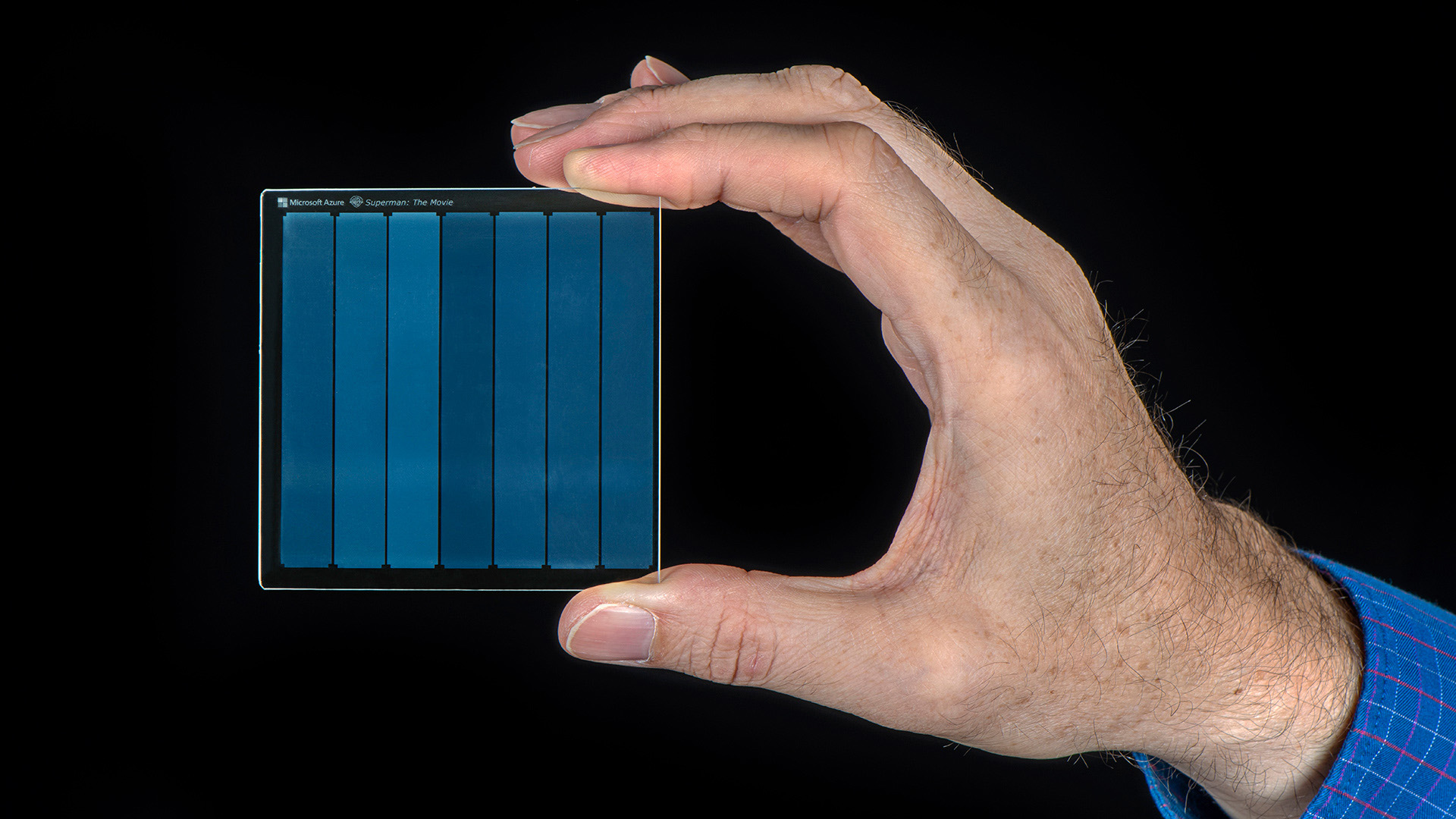
Glass data storage isn’t new, but the last decade has seen the technology advance leaps and bounds. Microsoft has recently revamped its quartz glass data storage endeavor Project Silica, which aims to store vast amounts of data on small quartz panels in a library-like structure.
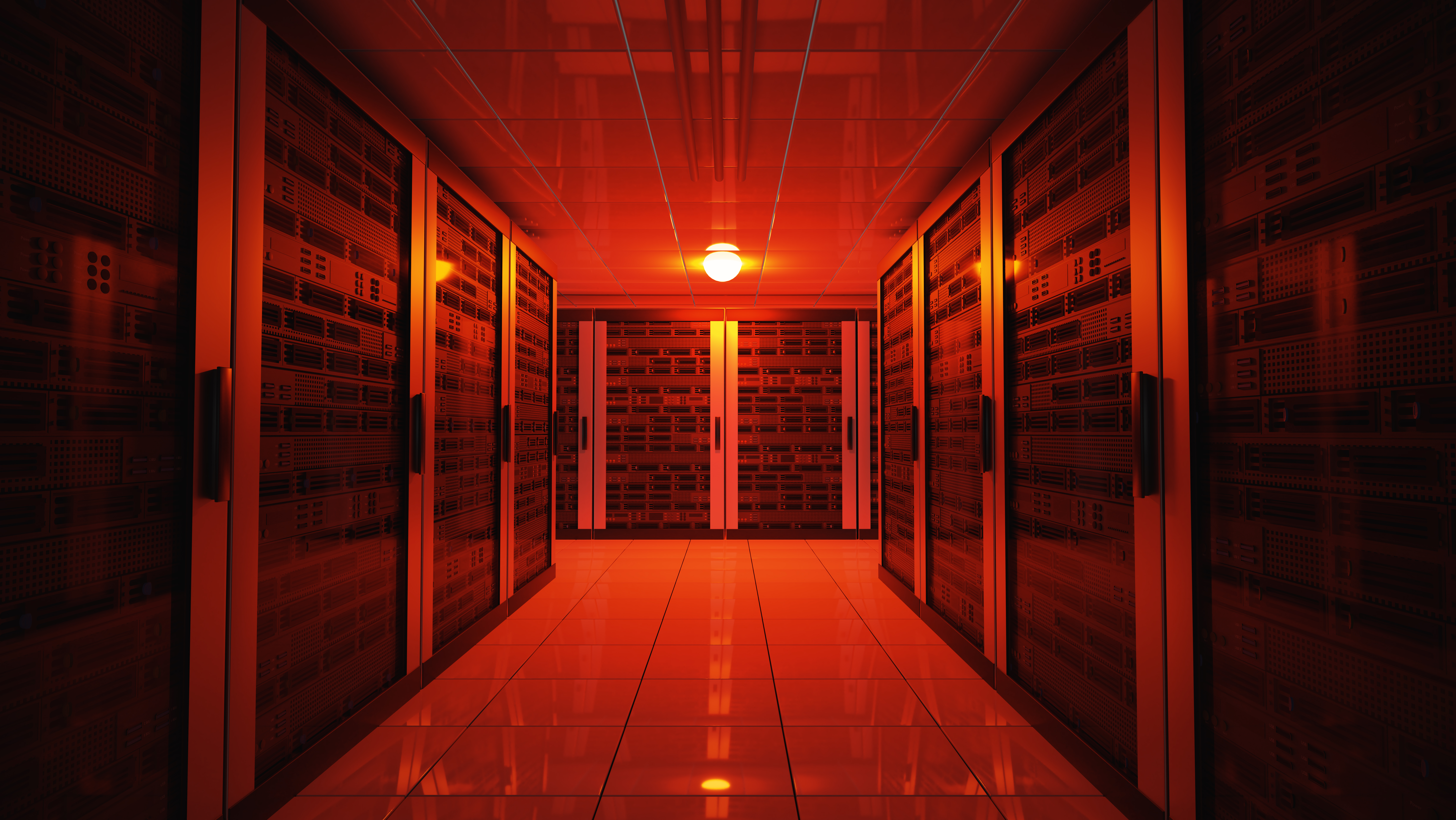
Since 2009, researchers have made great strides in harnessing the power of quartz glass for data storage. The biggest breakthrough came in 2012 when Hitachi uncovered a way to both record and ‘playback’ data etched into quartz glass. This discovery attracted the interest of cloud computing giant Microsoft Azure since the discovery pointed to the potential for sturdy storage of cloud data workloads.
At that time, the media of quartz glass could only hold 40MB of data. The technology took a major leap forward in 2016 when researchers from the University of Southampton etched 360TB of data onto glass and introduced the world to the 5D concept. 5D (meaning five dimensions) adds positioning and size to the standard three dimensions of height, width, and depth. This allows for vast amounts of data to be etched into several layers of quartz the size of a compact disc.
While the technology holds promise, it is still largely the domain of research papers and academic conferences. Microsoft has big cloud plans for quartz glass data storage in its data centers, but the technology may not be accessible to enterprises for some time.
Glass data storage explained
What is the nature of glass data storage?
Quartz, which is made up of silica, remains an abundant resource around the world. Quartz glass, also referred to as fused silica, shows resilience to vast changes in temperature and is relatively low-cost, say analysts, with fused silica being used in the Hubble Telescope mirror and the International Space Station. This makes it ideal for glass data storage.
To write data onto the fused silica, researchers need a femtosecond laser. This ultrafast laser etches shapes into the glass that convert into structures called voxels. These voxels live on hundreds of layers within one pane of pure silica glass.
What are the components of the glass storage system?
Glass storage requires hardware and software. For Project Silica, this includes:
- 5D Fused Quartz Media (quartz glass)
- Femtosecond Ultrafast Laser (writing data onto quartz glass): These machines are popular in the cataract treatment industry.
- Library (physical storage of data storage media)
- Specialized software
Researchers then house the quartz glass storage medium in a multi-tiered library with rails in front of each tier. Autonomous robots slide up and down the rails, picking the quartz glass pane programmers choose.
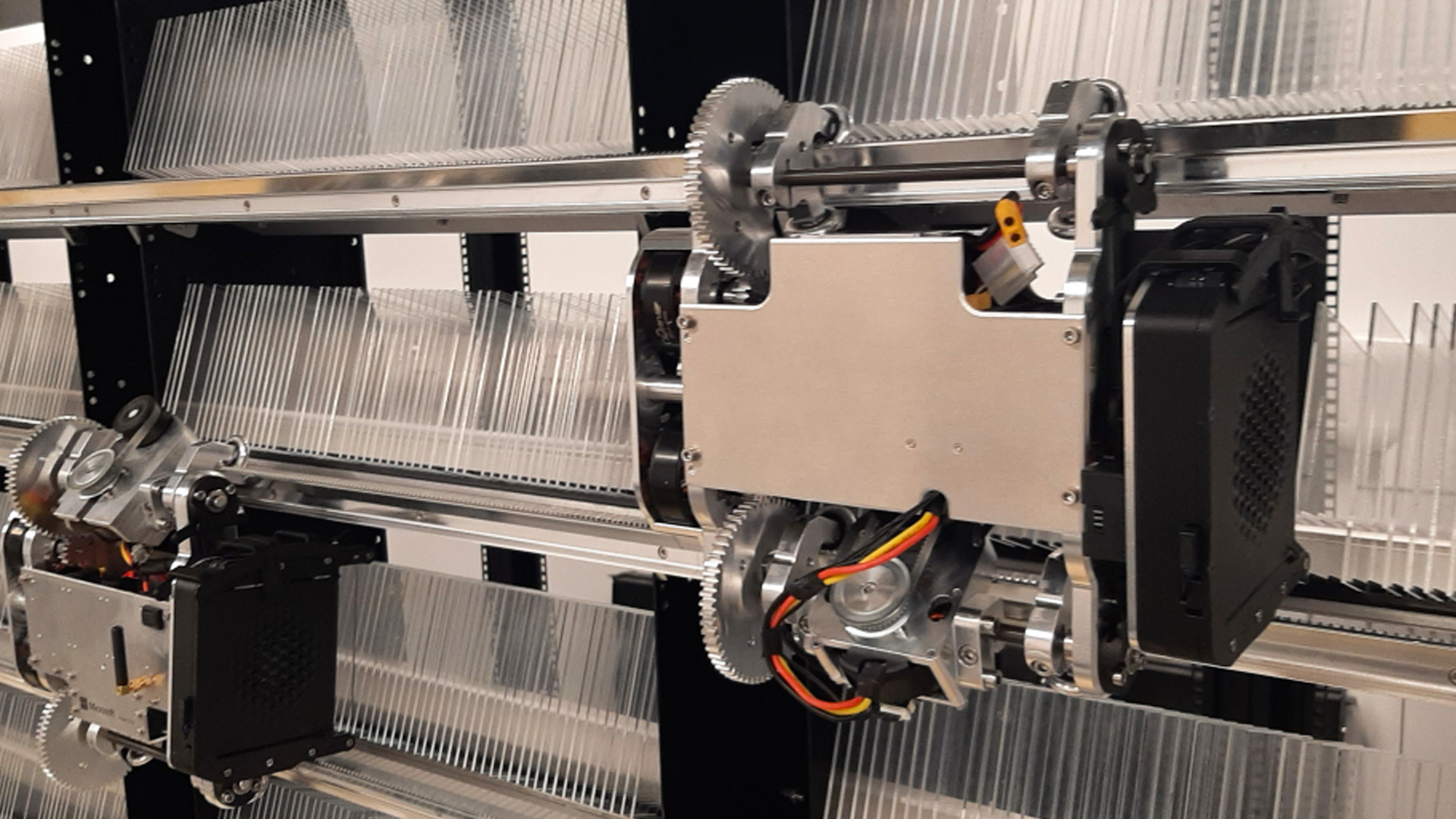
What are the use cases for glass storage?
As each iteration of glass data storage emerges, the potential use cases for the technology become clearer. Data storage for the best cloud computing services emerged as the most cost-effective use case for glass data storage in its current form. The main use cases are:
- Hyperscale Data Centers – Microsoft envisions leveraging the technology across its hyperscale data centers, helping the firm meet its sustainability goals while reducing operational costs associated with data storage today such as integrity checks.
- Blockchain – Microsoft’s Project Silica offers an air gap between write and read platters, creating an ideal storage infrastructure for blockchain-related data.
- Protecting data-at-rest – Data security for highly regulated industries such as finance could be enhanced with glass data storage. Organizations that are required to guarantee security of data-at-rest could comply using glass storage because of its physical durability, Microsoft claims.
Glass data storage benefits and drawbacks
Key benefits of glass data storage include its durability and permanence. In its current form, quartz glass storage media can withstand temperatures up to 1,000 degrees Celsius. It is inert and resistant to degradation from light or moisture. Enterprises could make great use of it as their storage medium for data backups.
Sign up today and you will receive a free copy of our Future Focus 2025 report - the leading guidance on AI, cybersecurity and other IT challenges as per 700+ senior executives
RELATED RESOURCE

Discover how Zscaler Digital Experience can help you improve retention rates, business growth, and profitability
DOWNLOAD NOW
In comparison, today’s tape or magnetic storage has around a 10-30 year lifespan before the data needs to be moved to the next generation of storage. In the process, as we’ve painfully experienced, data can become corrupted, lost, or degraded necessitating extensive data recovery. The cost of such an endeavor is no laughing matter. Not to mention the toll it takes on our ever-increasing global carbon footprint.
Even the best solid state drives (SSDs) last 5-10 years and are sensitive to light, dust, and temperature fluctuations. As such, the cost of managing the data’s environment could be greatly reduced with glass data storage.

A glaring drawback for quartz glass storage is the high cost of the ultra-laser writing process, which could keep widespread use away for many years. Although the maintenance costs of glass data storage costs are low, the average cost of the femtosecond laser needed to write data onto quartz glass media is between $10,000 and $500,000 depending on the manufacturer.
As such, use on a large scale is best suited to hyperscale data centers run by cloud computing companies. Magnetic data writing, while sensitive, is relatively low cost even when you factor in the storage environment management costs.
Other drawbacks include:
- A nascent, if not non-existent, vendor / end-user ecosystem.
- Few details on critical components of storage infrastructure such as applications and assurances that file formats will remain accessible.
- No insights into durability against risks like natural disasters, which are among the three most likely reasons for a cloud outage.
Microsoft is taking a somewhat measured approach to the technology in its academic paper surrounding Project Silica. Other presentations of the research findings, such as the project’s video and blog post, lean on the 10,000 years of data storage angle. While compelling, this mainly attracts archivists and not enterprises looking for stable, yet accessible data storage. In line with this, Microsoft recently completed a proof-of-concept in partnership with Warner Bros which saw the 1973 film Superman inscribed on a piece of quartz glass. The film studio hopes that in the future it can use glass data storage to safely archive its independent property (IP).
Where are we in the glass data storage development cycle?
Some consider glass data storage to be vaporware for the likes of metaverse-obsessed tech giants. Microsoft may make it available to users gradually, as it is still testing glass data storage on Azure. While the cost of manufacturing glass storage may be cost-prohibitive, Microsoft can use the innovation in its data centers and offer access to glass storage from an OpEx model, similar to the cloud.
Lisa D Sparks is an experienced editor and marketing professional with a background in journalism, content marketing, strategic development, project management, and process automation. She writes about semiconductors, data centers, and digital infrastructure for tech publications and is also the founder and editor of Digital Infrastructure News and Trends (DINT) a weekday newsletter at the intersection of tech, race, and gender.
-
 Microsoft CEO Satya Nadella wants an end to the term ‘AI slop’ in 2026
Microsoft CEO Satya Nadella wants an end to the term ‘AI slop’ in 2026News Microsoft CEO Satya Nadella might want the term "AI slop" shelved in 2026, but businesses will still be dealing with increasing output problems and poor returns.
-
 New security features are coming to Microsoft Teams this month
New security features are coming to Microsoft Teams this monthNews From 12 January, weaponizable file type protection, malicious URL detection, and a system for reporting false positives will all be automatically activated.
-
 The Microsoft Azure outage explained: What happened, who was impacted, and what can we learn from it?
The Microsoft Azure outage explained: What happened, who was impacted, and what can we learn from it?News Microsoft has confirmed its Azure services are back online after a major outage impacted services across multiple regions – here's everything you need to know.
-
 Google just confirmed the location of its first small modular reactor
Google just confirmed the location of its first small modular reactorNews Developed by Kairos, Google's first small modular reactor will be located in Tennessee, with operations beginning in 2030.
-
 Microsoft's plan to use human waste to offset AI emissions stinks of greenwashing
Microsoft's plan to use human waste to offset AI emissions stinks of greenwashingOpinion Hyperscalers are getting increasingly gimmicky when it comes to sustainability
-
 Microsoft invests $400 million to expand Swiss data centers
Microsoft invests $400 million to expand Swiss data centersNews Growing AI and cloud demand, plus data sovereignty requirements, are fueling European data center investment
-
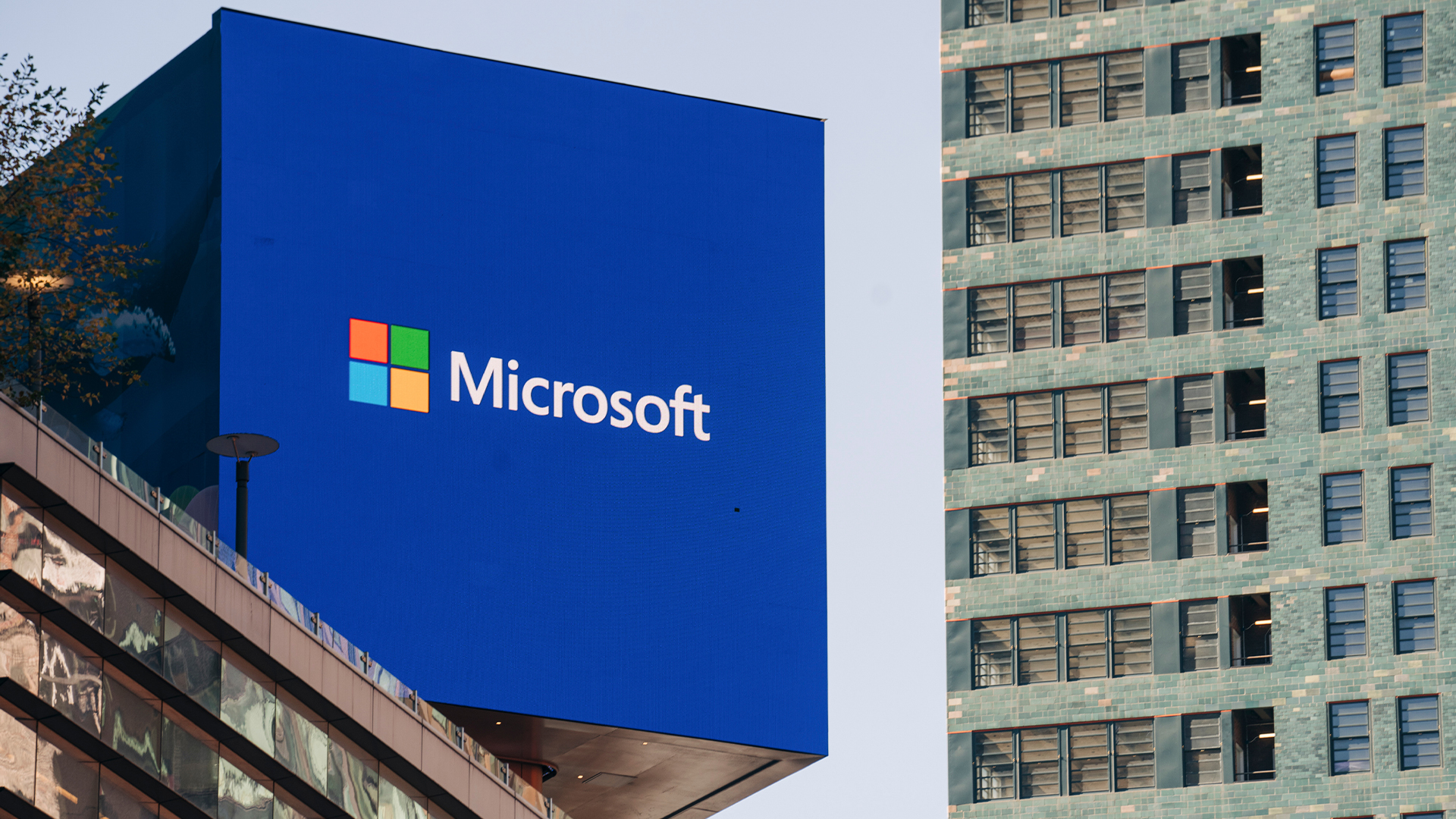 Microsoft says this data center cooling technique can cut emissions by one-fifth – but switching to renewables will prove far more impactful
Microsoft says this data center cooling technique can cut emissions by one-fifth – but switching to renewables will prove far more impactfulNews In a cradle-to-grave environmental assessment, Microsoft has examined manufacturing, transportation, deployment, and end-of-life disposal
-
 First Microsoft, now AWS: Why tech giants are hitting the brakes on costly data center plans
First Microsoft, now AWS: Why tech giants are hitting the brakes on costly data center plansNews Amazon Web Services (AWS) has paused plans for some data center leases, according to analysts, sparking further concerns about the cost of AI infrastructure spending plans.
-
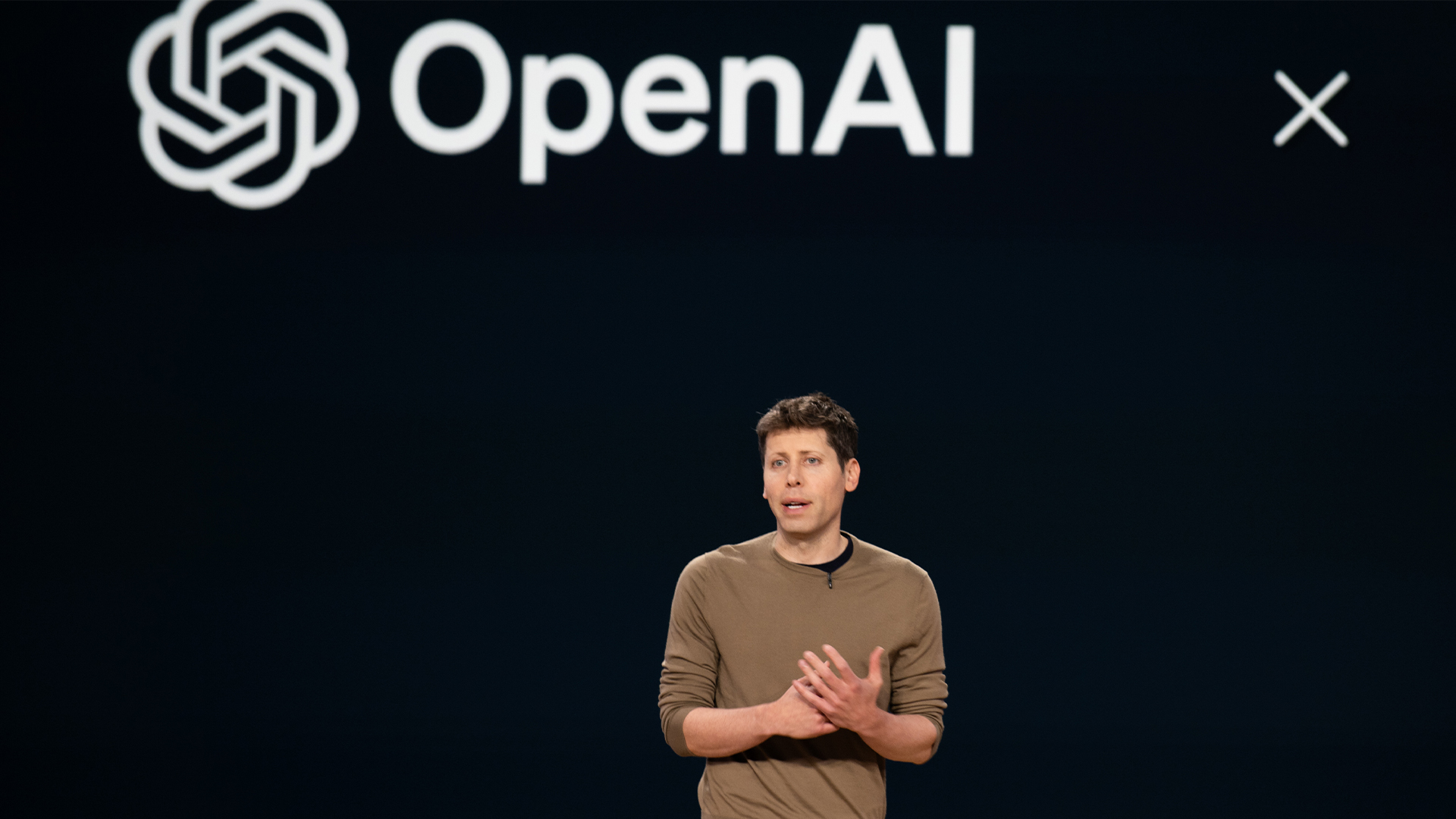 OpenAI inks $12bn CoreWeave deal in latest move away from Microsoft
OpenAI inks $12bn CoreWeave deal in latest move away from MicrosoftNews Cloud infrastructure company CoreWeave will supply OpenAI with infrastructure to run the firm's latest models in a deal worth nearly $12 billion.
-
 Analysts think Microsoft's data center rollback is bad news for the AI boom – but the company says not to worry
Analysts think Microsoft's data center rollback is bad news for the AI boom – but the company says not to worryNews Microsoft has reportedly ended leases for a significant amount of data center capacity, sparking debate over whether the AI boom is starting to falter.
